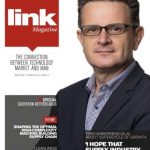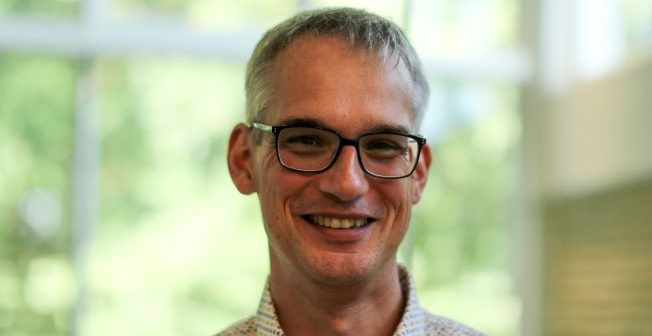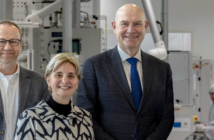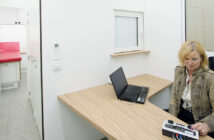A very open way of working together, in which you can critically analyse the customer’s request and ask further questions. In which you can involve your competitor in case of problems that you as a supplier do not know the answer to, so that you can also make use of their specialisms to find a solution. This way of working is typically Dutch, says Sven Pekelder, CTO/co-owner of Settels Savenije. ‘Therein lies a business model for the Netherlands that we could still capitalise on much better.’
‘That’s why Asians and Americans like coming here’
‘The American and Asian high-tech world sees the advantages of this, but are culturally not able to copy this way of working. So they come to the Netherlands to solve complex technical problems, with its small suppliers who are not so readily seen as a threat.’ The Dutch way of working together to solve high-tech challenges is based on a more ‘feminine culture’, in which telling people what you don’t know and the mistakes you’ve made is much less of a problem than in the more masculine culture in the rest of the world, Pekelder points out.
Dutch reflex
‘Suppose an Asian customer comes for a motion control module, meant to move a product carrier from A to B. We would then like to know in what context this module has to work, what it will form part of. People often don’t like to tell this, for fear of being caught having made a mistake. And because they don’t want to give away the IP. Above all, they want to know from you if you can make it and what it will cost. We often don’t get any further in such situations. But if we do get an idea of the bigger picture, we may discover that the module in question will not work, at least not if we make it according to the customer’s specifications. In that case, the customer sometimes still sticks to the specifications. Because they won’t admit their mistake.’
‘And certainly not in a larger group of people. Suppose you see that the problem can be solved, but only if another module, supplied by that other supplier is modified. The typical Dutch reflex then is: “Let the three of us put our heads together.” But that’s not how it works elsewhere in the world. The customer doesn’t want to put their problem on the table, especially not in front of several suppliers. But they also have no mind to constantly call upon the two suppliers one after the other. So they stick to their specifications.’
Keep on talking
Does the client then bury their head in the sand, only to be confronted with much bigger problems later? That may be the case, but, Pekelder admits, it can also result in a solution that is not perfect but that works. ‘Asians and Americans sometimes think that we just keep on talking. They set great store by meeting the deadline, by speed. They are more satisfied if something works 80 percent, the rest will come in the next generation. They may be right about that. Except when something really needs to work impeccably, then they have a much bigger problem. It is then up to us to prevent this by finding out the maximum permissible margin of error.’
Rational demonstration
This search requires experience, gut feeling, but also insight into the bigger picture so that the rational instrument of model-driven system engineering can be used. ‘Half of the work of a system engineer is stakeholder management: balancing all the interests of all the people and parties involved to reach a solution. But if you have enough information about the bigger picture, you can show a product’s operation in a digital model. This way you leave out the emotional aspect, you can show your discussion partners in a very rational way that the customer’s solution does not work in actual practice. Subsequently, it often turns out that these specifications are not that strict at all. That – so to speak – a little less than those 2,000 kilometres on one battery is also fine. Then you can move on.’
Building trust
‘With a new customer you will first have to build up a relationship of trust, and that is a challenge at a time when you have no results yet that you can show. How you do that exactly is difficult to explain, just as an artist will not be able to explain how they produce a beautiful painting. But if you succeed, it will make the second job much easier. In that respect, it is no different in the Netherlands: We work together openly here, but if you violate trust, you damage your reputation. You will suffer a loss of face. We are no different in this from the rest of the world.’
Increasing appreciation
‘Two years ago a customer sent us the specifications for a motion module. After further questions it turned out that the module was intended for a flat panel production machine and that the specifications had been drawn up based on an earlier, smaller generation of the machine. We soon saw that simply increasing the scale would lead to rigidity problems and vibrations, and that more power would not help. After lengthy discussions, the customer went along with us and a machine could be built that functioned correctly.’
Successful cases like this circulate rapidly. In Asia and the US, with their often vertically integrated companies, the open Dutch way of cooperating in chains consisting of numerous small, independent parties is now increasingly appreciated. ‘Elsewhere people see that open collaboration ultimately leads to better solutions more quickly for a one-stop OEM in a network of specialist suppliers.

Theo Kneepkens
(KLA) about supercycle of growth: Í hope that supply industry expands its capacity’. Read this edition of link magazine digitally via this link
Business model
‘Taking over this open, proactive way of working themselves is, however, still a bridge too far for them. That is why Asians and Americans like coming to the Netherlands. Our systems engineering approach provides a business model for the Netherlands that we could still capitalise on much better. The Sino Dutch High-Tech Innovation Port that the Dutch high-tech industry wants to set up in Suzhou, in which various system suppliers work together on the solution for the customer in their typically Dutch way, would be an excellent showcase for this.’
Design and manufacturing knowledge under one roof
Settels Savenije works for international high-tech clients including ASML, Teledyne, Elekta, IAI, Thermo Fisher, Kulicke & Soffa, Zeiss and Bosch Rexroth. Settels is a total solution provider of systems, modules and critical components to OEMs at the forefront of technology, located in Eindhoven, the Netherlands. Total staff of 140 FTE in 2020. Half of them work in R&D, 25% in Advanced Systems and 25% in Precision Parts. Since last year, all these people have been working under one roof in Eindhoven. A strategic choice, says Sven Pekelder. ‘As a developer and manufacturer of highly complex high-tech modules and systems, we are pushing the limits of what is feasible in terms of mechanics, mechatronics, physics and cleanliness. Moreover, we are under constant pressure to meet that time-to-market – and to get it right the first time. In our philosophy, this means that you need to have the design and manufacturing knowledge physically close to each other. Because by doing so you create a situation in which people automatically share knowledge; then you get the cross-pollination that ensures that the designs developed can actually be manufactured well and efficiently.’





